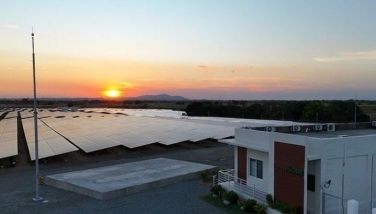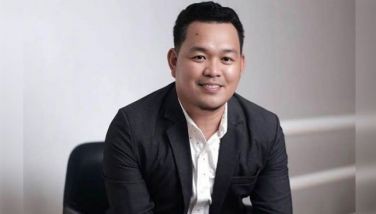The maritime silk route

A group of us who have been with constitutional change through thick and thin and against all odds have often despaired that we will ever see it happen in our lifetime. Some have already died with these unfulfilled dreams.
In a way, Benigno Simeon Aquino III’s administration has brought the country to a nadir from which the only way we can get out of is through constitutional reform. It took the form of an outright robbery of the national treasury while at the same time professing that he was against corruption because as he puts it “walang mahirap kung walang corruption.” He took short cuts that destroyed our institutions that makes it now necessary to start rebuilding the nation from the ground up.
Or to put it in Adam Gopnik’s review of the Dreyfus Case in the New Yorker, “The urge to protect the nation from its enemies by going around the corner to get them is natural, but what you get is usually not the enemies, and, going around the corner, you bump into something worse. Breaking the law to defend the nation ends up breaking the nation. Sometimes long stories have short morals. If it is true that the funds from DAP were used to bribe congressmen and senators to oust former Chief Justice Renato Corona, then we are in a similar situation at the time of the Dreyfus scandal. The writer, Emile Zola opened a nationwide discussion with his open letter to Clemenceau — J’accuse — that has become a classic plea for the rule of law.
* * *
It may be that the next generation may be going ahead of us in wishing and wanting a better society. I never thought that the five-year-old girl who did not understand political exile during martial law in the Philippines would be a journalist and be covering martial law in Bangkok.
As Al-Jazeera’s correspondent in Asia, my daughter Veronica now tackles as daily fare the lack of freedom in Thailand, a country that has become her home. She is also into other advocacies in the countries that surround Bangkok, including genocide in Myanmar that she says goes on and not well known outside the country.
But she has not forgotten her country of origin nor living her childhood in exile. Strange coincidence that she should relive that past in another country. In FB she reposted the Al-Jazeera’s documentary on Youtube “Imelda and Me” on the story of her childhood in exile as she lives in a place now under martial law. Unbelievable coincidence. Or was she fated to live what she had escaped from as a child?
* * *
Of the many things that Chinese Ambassador Zhao Jianhua said during his speech at the dinner in his honor by the Philippine Chamber of Commerce and Industry, I was struck by what he said about the ‘Maritime Silk Road.” I had always thought that the Silk Road was land-based. It was the first time that I understood about the emotional attachment the Chinese have about the South China Sea.
I had the book “When China Ruled the Seas by Louise Leviathan“ sitting on my bookshelves for a long time, unread and untouched until I heard it from Ambassador Zhao.
* * *
It is not enough for Chinese scholars to say that the basis for their claims is historical. They have to explain what that history was. The South China Sea as an important component of the Maritime Silk route as Art Valdes would say was a unifying factor in the region.
Few Filipinos discussing the South China Sea conflict know about a time that it was a vehicle of friendship and cooperation between China and the countries bordering the waters. Indeed the period that Leviathan writes about was a hundred years before Columbus. The Chinese were into shipbuilding and although they are referred to as “giant Chinese junks” these were the beginning of a golden age for China’s navy.
The ships or junks were under the command of Admiral Zheng He. His purpose was to trade. If today, we are able to dig archeological remains of those ventures, it was because of this man who began what is now referred to as a maritime silk route.
Zheng He filled the ships with with the empire’s finest porcelains, lacquerware, and silk for trade. There are maps to show how he traveled to reach the world’s “four corners.” But it was stopped when China went into isolation under a new emperor.
The maritime silk route taken by Zheng He was from 1405 to 1433. He took seven epic expeditions across the China Seas and the Indian Ocean, from Taiwan to the spice islands of Indonesia and the Malabar coast of India, on to the rich ports of the Persian Gulf and down the African coast, China’s “El Dorado,” and perhaps even to Australia, 300 years before Captain Cook was credited with its discovery.
The journey hugged close to land to avoid storms in perilous seas. (That partly explains the nine or 10 dash line of Chinese mapmakers.)
“The largest wooden boats ever built, these extraordinary ships were the most technically superior vessels in the world with innovations such as balanced rudders and bulwarked compartments that predated European ships by centuries.
For 30 years foreign goods, medicines, geographic knowledge, and cultural insights flowed into China at an extraordinary rate, and China extended its sphere of political power and influence throughout the Indian Ocean.”
* * *
With that background, it is not surprising that China would base their claims on history, of a time that was lost and they hope to regain.
To Filipino-Chinese businessmen he urged “business as usual” to benefit both countries with whom we have a 1000 –year relationship. The dispute on the China sea need not impair working together for the prosperity of the region helped by the maritime silk road.
“It is imperative and essential that the two countries focus (on) things that can unite us, focus on things that can promote common prosperity for both countries,” ambassador Zhao Jianhua added.
* * *
Ambassador Zhao never mentioned the South China Sea conflict. It was former Speaker Jose de Venecia who did when he delivered the closing remarks on behalf of Filipinos. He reminded the audience that Binondo was the first Chinatown in the whole world.
The Philippines has lagged behind other countries in the region that have taken advantage of trade and cooperation with the rising superpower. He recalled the time when all three: China, Vietnam and the Philippines were able to forge an agreement on exploration not just for oil but for whatever could be shared from the sea.
- Latest
- Trending






















